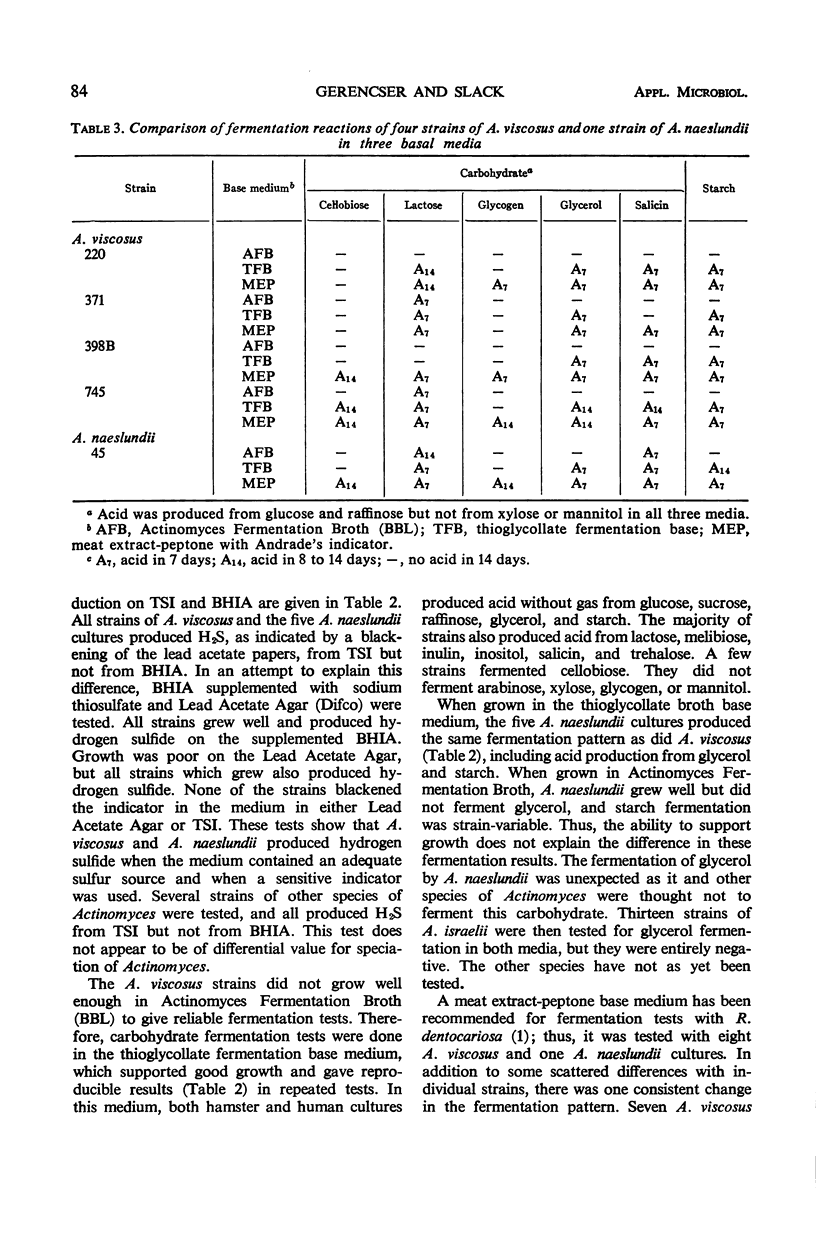Abstract
Catalase-positive actinomycetes which closely resemble the “hamster organism” described by Howell have been isolated from dental calculus and other human sources. These cultures could not be distinguished from the hamster strains on the basis of morphology, oxygen requirements, biochemical reactions, or cell wall composition. These human isolates have been classified with the hamster strains as Actinomyces viscosus. The strains from hamster and human sources fell into two serotypes. Serotype 1 contains the hamster strains plus one strain of unknown origin, whereas serotype 2 contains all of the human strains.
Full text
PDF







Images in this article
Selected References
These references are in PubMed. This may not be the complete list of references from this article.
- GILMOUR M. N., HOWELL A., Jr, BIBBY B. G. The classification of organisms termed Leptotrichia (Leptothrix) buccalis. I. Review of the literature and proposed separation into Leptotrichia buccalis Trevisan, 1879 and Bacterionema gen. nov., B. matruchotti (Mendel, 1919) comb. nov. Bacteriol Rev. 1961 Jun;25:131–141. doi: 10.1128/br.25.2.131-141.1961. [DOI] [PMC free article] [PubMed] [Google Scholar]
- Gerencser M. A., Slack J. M. Isolation and characterization of Actinomyces propionicus. J Bacteriol. 1967 Jul;94(1):109–115. doi: 10.1128/jb.94.1.109-115.1967. [DOI] [PMC free article] [PubMed] [Google Scholar]
- HOWELL A., Jr, MURPHY W. C., 3rd, PAUL F., STEPHAN R. M. Oral strains of Actinomyces. J Bacteriol. 1959 Jul;78(1):82–95. doi: 10.1128/jb.78.1.82-95.1959. [DOI] [PMC free article] [PubMed] [Google Scholar]
- Howell A., Jr A filamentous microorganism isolated from periodontal plaque in hamsters. 1. Isolation, morphology and general cultural characteristics. Sabouraudia. 1963 Oct;3(1):81–92. doi: 10.1080/00362176485190131. [DOI] [PubMed] [Google Scholar]
- Pine L., Boone C. J. Comparative cell wall analyses of morphological forms within the genus Actinomyces. J Bacteriol. 1967 Oct;94(4):875–883. doi: 10.1128/jb.94.4.875-883.1967. [DOI] [PMC free article] [PubMed] [Google Scholar]
- Slack J. M., Landfried S., Gerencser M. A. Morphological, biochemical, and serological studies on 64 strains of Actinomyces israelii. J Bacteriol. 1969 Feb;97(2):873–884. doi: 10.1128/jb.97.2.873-884.1969. [DOI] [PMC free article] [PubMed] [Google Scholar]
- Snyder M. L., Bullock W. W., Parker R. B. Morphology of gram-positive filamentous bacteria identified in dental plaque by fluorescent antibody technique. Arch Oral Biol. 1967 Nov;12(11):1269–1273. doi: 10.1016/0003-9969(67)90128-8. [DOI] [PubMed] [Google Scholar]
- Wells A. F., Miller C. E., Nadel M. K. Rapid fluorescein and protein assay method for fluorescent-antibody conjugates. Appl Microbiol. 1966 Mar;14(2):271–275. doi: 10.1128/am.14.2.271-275.1966. [DOI] [PMC free article] [PubMed] [Google Scholar]








